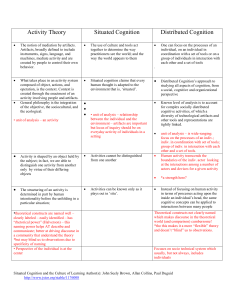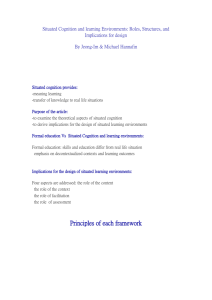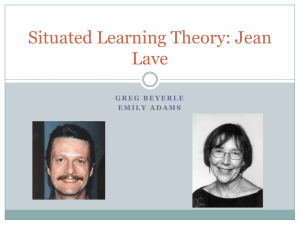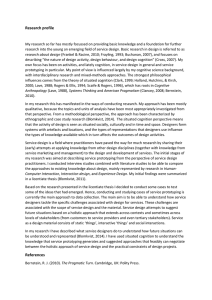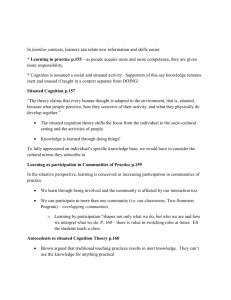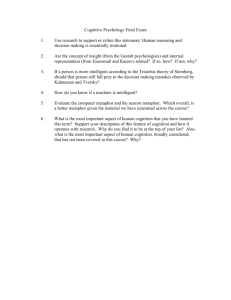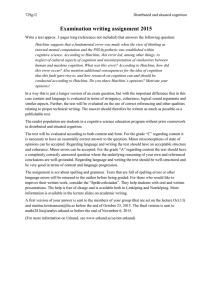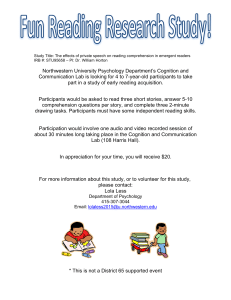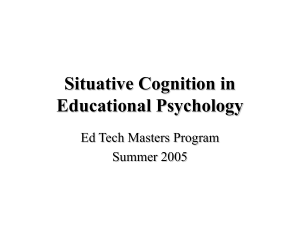Situated Cognition@cleo3
advertisement
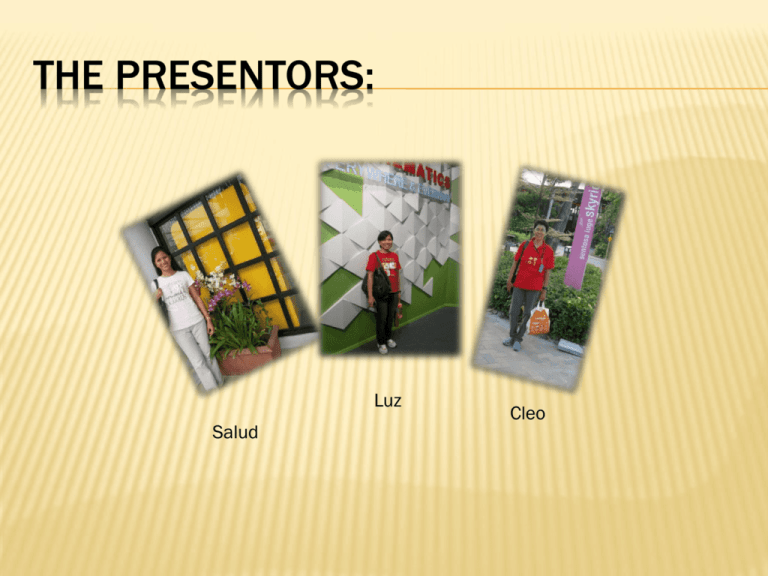
THE PRESENTORS: Luz Salud Cleo SITUATED COGNITION SITUATED COGNITION The idea that learning results from complex social interaction is central to the theory of situated cognition. Brown et al. (1989) called that theory of learning a process of enculturation and applied it not only to how craft apprentices learn their trades but also to how students learn. SITUATED COGNITION Vygotsky (1977) thinking, knowing, and understanding are the result of sociohistorical experience. (Gredler, 1997). That experience includes using and understanding the signs and symbols of one's culture to become part of a social group (Rogoff, 1984).Children and other novices receive information about their culture's tools and practices through interaction with experienced members of the culture EXPLANATION This theory is about the self-learning process of an individual in a given situation. The daily experiences in real life situation teach him to response or on how to emerge to given problems. True application-based learning experience that should result in a lasting knowledge. Someone has to undergo a "trial and error experience tempered by mentors who were willing to help and share their wisdom" and arrived at a more meaningful experience. The key is there is an opportunity for problem solving and application-based learning , coupled with an interaction with those who are well equipped to mentor in a given area. LEARNING STRATEGIES Collective Problem Solving 2. Displaying Multiple Roles Confronting ineffective strategies and misconceptions 4. Collaborative work skills Experimentations/ Investigatory project 6. Apprenticeship 7. Open-Ended Inquiry 8. Simulations 1. 3. 5. MATH SUBJECT Sample activity Measurement (Application) Problem Solving activity PHYSICS SUBJECT Sample Activity Project Work – Investigatory Project CHEMISTRY Sample Activity Acid and Base (Application) Problem-Based Activity Experimentation http://www.yenka.com/content/item.action?qu ick=1xb# End of Show PRESENTED BY Cleopatra N. Cruz Salud N. Velasco Luz C. Maraggun
